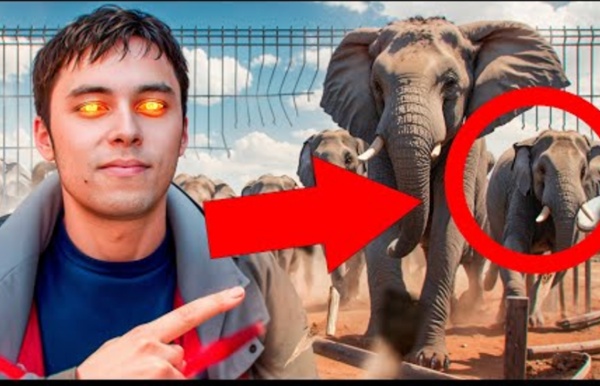



Michael Wesch "global dance floor" 10 jan 2009 | hal finney | "running bitcoin" A Web 2.0 website allows users to interact and collaborate... 1972 | Finding Lena Forsen, the Patron Saint of JPEGs πολλά βίντεο *για* YouTube ή υπάρχει απεύθυνση στο... 23 april 2005 | The first ever YouTube video was uploaded 15 years ago The first ever YouTube video was uploaded on April 23, 2005 -- exactly 15 years ago, today. YouTube co-founder Jawed Karim posted the 18-second video, titled "Me at the zoo." It has since garnered over 90 million views. To this day, it is the only video on Karim's channel. Upon clicking play, the screen fills with a young Karim's face, his disheveled hair taking up the screen front and center. "Alright," Karim begins. There he is. "The cool thing about these guys is that they have really, really, really long, um, trunks," he continues. So. Unlike many YouTube creators' videos these days, Karim's video does not include what's considered the more traditional sign off: "Subscribe to my channel!" He ends the video simply by stating: "And that's pretty much all there is to say." A year after "Me at the zoo," Karim and fellow co-founders sold the platform to Google for a whopping $1.65 billion. Now, the platform boasts more than 2 billion logged-in users visit each month, according to YouTube.
Barry Wellman, "Δικτυωμένος ατομικισμός" (networked individualism) -2000 1973 | not exactly internet | cut copy paste - Larry Tesler, the UI pioneer responsible for cut, copy, and paste, dies at 74 Larry Tesler, a computer scientist who is most well-known for creating the seminal computer concepts cut, copy, and paste, died on Monday at age 74. Tesler was born in 1945 in New York and studied computer science at Stanford, according to Gizmodo. After working in AI research, he joined Xerox’s Palo Alto Research Center (PARC) in 1973, where he developed cut, copy, and paste. The concepts would later become instrumental user interface building blocks for both text editors and entire computer operating systems. PARC is most famous for its early work on graphical user interfaces and how to navigate them with a mouse — and because Apple co-founder Steve Jobs saw this early research and used it as inspiration to develop better iterations of the ideas for Apple products. Tesler was also a champion of a concept called “modeless” computing, which is the idea that a program shouldn’t have different “modes” where a user’s input does different things based on whichever mode you’re in.
context collapse, 21 3 dec 1992 | SMS Turns 20 With A Touch Of Festive Cheer | Science Museum Blog Every time we invent a new communications device, somebody has to decide what the first every message will be. So, 20 years ago today, when 22-year-old British engineer, Neil Papworth, was trying out Vodafone's new SMS system out for the first time, what did he send? Well, as it was nearing Christmas, there was really only one choice: MERRY CHRISTMAS Every time we invent a new communications device, somebody has to decide what the first every message will be. Sometimes this is planned in advance and has a weighty meaning. For example, when the first American telegraph line was officially opened in 1844, the first message sent by Samuel Morse asked: What hath God wrought? On other occasions, the inventors of the technology were taken by surprise, such as Alexander Graham Bell. So, 20 years ago today, when 22-year-old British engineer, Neil Papworth, was trying out Vodafone’s new SMS system out for the first time, what did he send?
dramaοι πρώτοι σελέμπριτι κρίσεις γύρω από την αυθεντικότητα ... En 1979, une chaîne de mails sur la science-fiction inventait l'internet d'aujourd'hui Temps de lecture: 9 min Il y a quarante-neuf ans, lorsque les ordinateurs furent mis en réseau pour la première fois, le précurseur de l’internet que nous connaissons aujourd’hui n’intéressait que la science. Arpanet, la création de l’Advanced Research Projects Agency –ARPA, l'ancêtre de la DARPA d’aujourd’hui–, avait pour objectif de permettre aux scientifiques bénéficiant de financements par l’armée américaine de partager deux denrées alors incroyablement rares et coûteuses: le temps et la puissance de calcul. Réseau des réseaux À l’époque, seule une poignée d’universités disposaient d'ordinateurs. La seule façon d’en utiliser un –ou de transférer un fichier d’un appareil à un autre– était de voyager jusqu'à l’endroit qui l'hébergeait. Quelques semaines plus tard, un ordinateur de Santa Barbara, en Californie, et un autre situé dans l’Utah rejoignirent le réseau. Ces divers mini-réseaux présentaient toutefois un problème inattendu. Du moins jusqu’en 1979. Proto-communautés en ligne